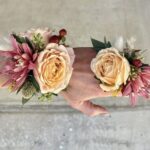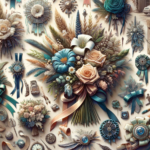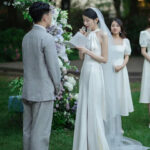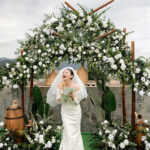Beautiful Plants For Your Interior
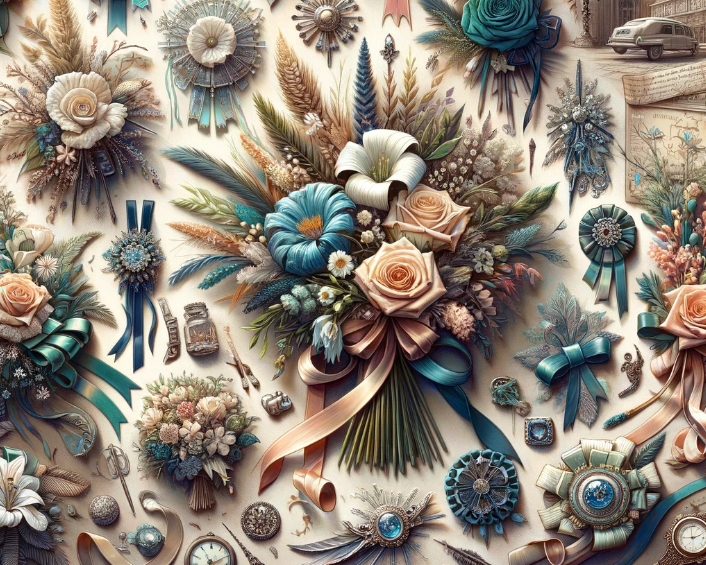
Table of Contents
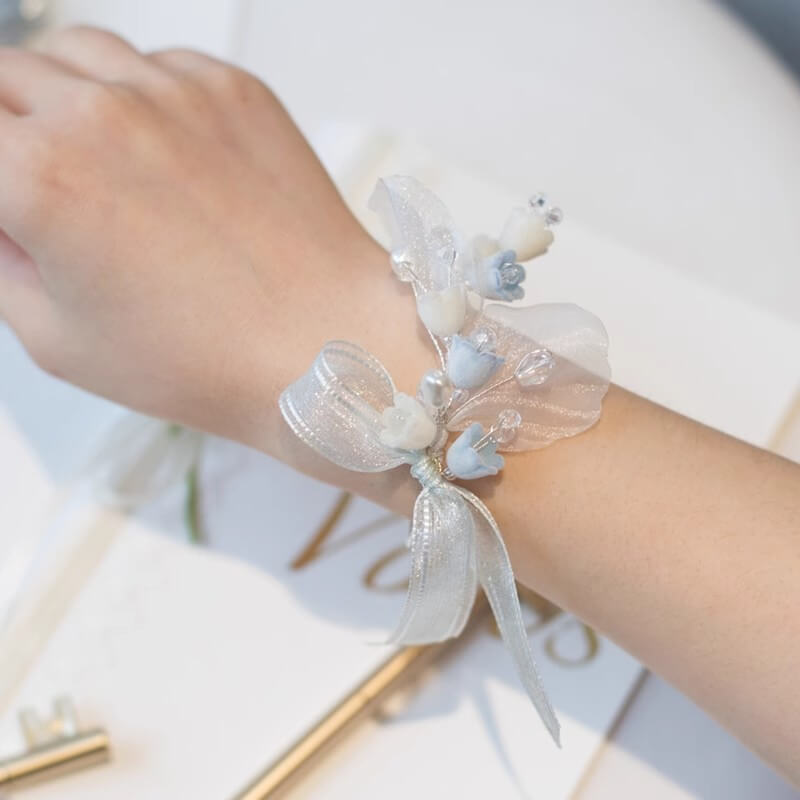
Introduction
In the realm of weddings and formal events, few accessories hold as much symbolic and aesthetic value as the corsage. This delicate floral arrangement, traditionally worn on the wrist or pinned elegantly to a dress, is a small but significant detail that carries centuries of tradition, a wealth of symbolism, and a deep connection to cultural practices around the world.
The corsage, in its myriad forms, has graced the wrists and attire of women across generations, transcending its role as a mere accessory to become a meaningful emblem in life’s most significant ceremonies. It’s not just an adornment; it’s a personal statement, a nod to tradition, and a touch of nature’s beauty, all woven into one.
In weddings, the corsage serves as a visual connector, linking the special individuals who play pivotal roles in the ceremony. From the bride’s and groom’s mothers to the honored guests, corsages mark these individuals with distinction and grace, subtly echoing the themes and colors of the wedding itself. But to understand the full impact and importance of this elegant accessory, one must delve into its rich history, exploring how it evolved from ancient rituals to become a staple in modern ceremonial attire.
As we embark on this exploration, we will uncover the layers of meaning behind the corsages seen at weddings today. From the choice of flowers and colors to the design and placement, every aspect of a corsage tells a story. We will discover how these stories intertwine with cultural traditions, personal expressions, and contemporary fashion trends.
This journey through the world of corsages will reveal why this small but significant accessory remains an enduring and cherished element in weddings. It’s a journey that invites us to appreciate the corsage not just as a part of wedding attire, but as a piece of living history, a work of art, and a symbol of the enduring beauty of human connection and celebration.
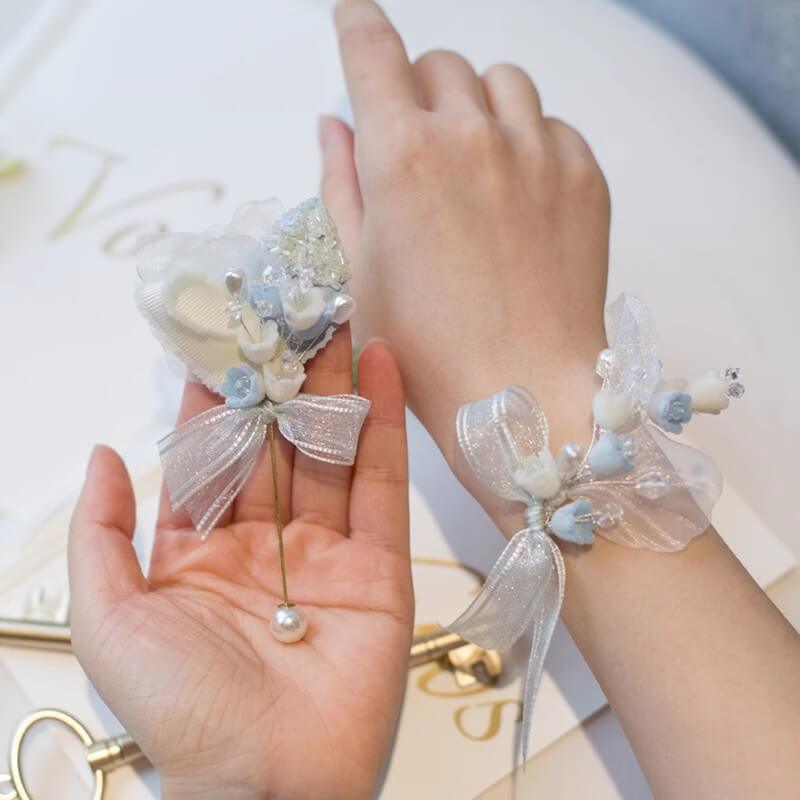
The History of Corsages
The practice of wearing flowers can be traced back to ancient Greece and Rome, where they were worn for their fragrance and believed to ward off evil spirits. This tradition evolved during the Victorian era, when flowers became a language in themselves, capable of conveying messages of love and admiration. The corsage, specifically, gained popularity in the 20th century as a fashionable accessory for significant social events.
Symbolism and Traditions
Different flowers carry different meanings. Roses, often used in corsages, symbolize love and passion, while orchids represent beauty and strength. The tradition of wearing a corsage has its etiquette. Typically, the corsage is bought by the date and is meant to complement the attire. In weddings, corsages signify the special status of certain guests, often worn by mothers and grandmothers of the bride and groom.
Corsages in Modern Weddings
In the tapestry of modern weddings, corsages stand out as both a nod to tradition and a canvas for contemporary expression. They are no longer just simple floral accessories; they have transformed into intricate designs that reflect the personality of the wearer, the theme of the wedding, and the latest trends in fashion and floristry.
Trend Integration: Today’s corsages are influenced by current fashion trends. From bohemian to ultra-modern styles, corsages are designed to complement the wedding’s overall aesthetic. For instance, a rustic-themed wedding might feature corsages with wildflowers and greenery, while a glamorous event might opt for orchids or peonies with sparkling embellishments.
Personalization and Meaning: Modern corsages are deeply personal. Brides often choose flowers that hold special meaning, such as the first flower their partner gave them or blooms that represent their heritage. This personalization extends to the design, where elements like heirloom lace or a piece of family jewelry can be incorporated, adding layers of sentimentality and history.
Diversity in Design: The classic wrist corsage is no longer the only option. Contemporary designs see corsages as elaborate hand-tied arrangements, floral cuffs, and even as part of a statement jewelry piece. This diversity allows for creativity and innovation in how corsages are presented and worn.
Color Coordination: In modern weddings, the color of the corsage is carefully chosen to harmonize with the wedding palette. Whether it’s subtle pastels, bold hues, or monochromatic schemes, the corsage becomes a part of the visual symphony of the wedding.
Inclusivity and Variety: Today’s corsages cater to a wide range of preferences and styles. They are no longer limited to female members of the wedding party. Gender-neutral and unisex designs are emerging, making the corsage a versatile accessory for all.
Sustainability: An increasing number of modern couples are conscious of the environmental impact of their wedding choices. Sustainable corsages, made with locally sourced flowers and biodegradable materials, are becoming more popular, reflecting a commitment to eco-friendly practices.
Technology and Innovation: Advances in floristry techniques and preservation methods mean modern corsages can be more intricate and longer-lasting than ever before. Techniques like floral dipping, which preserves the freshness and color of flowers, are being employed to ensure that these delicate accessories withstand the length of the wedding festivities.
In conclusion, the corsage in modern weddings is a testament to how traditions can evolve and adapt. It’s a fusion of history and contemporary style, a way for brides and wedding parties to express their unique identities while honoring the timeless beauty of this classic accessory. As weddings continue to evolve, so too will the art of the corsage, forever capturing the essence of the celebration in each delicate petal and leaf.
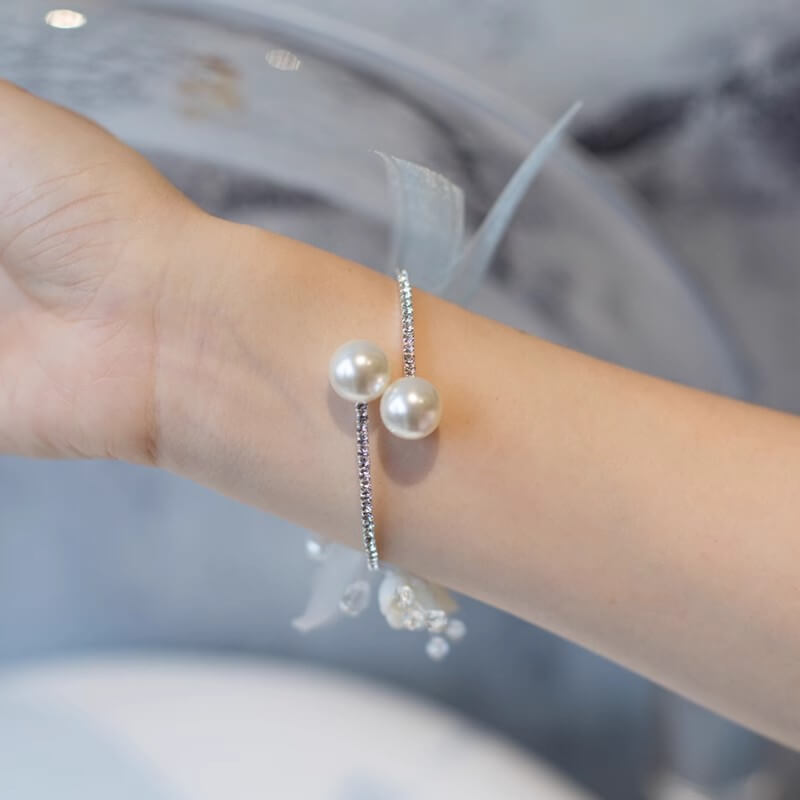
Choosing the Right Corsage
Selecting a corsage involves considering the style of the dress, the theme of the wedding, and the personal preferences of the wearer. For a traditional wedding, classic flowers like roses or lilies are popular choices. For a more modern or unconventional wedding, designers might use unexpected elements like succulents or herbs.
The Process of Creating a Corsage
Creating a corsage is an art. It begins with selecting fresh flowers and coordinating them with ribbons and other embellishments. The construction involves wiring and taping the elements together, ensuring the corsage is both beautiful and sturdy enough to endure the event.
The Evolution of Corsage Styles
Over the years, corsage styles have evolved significantly. From the large and elaborate designs of the past to the more sleek and modern interpretations of today, corsages have continually adapted to fashion trends while retaining their symbolic value.
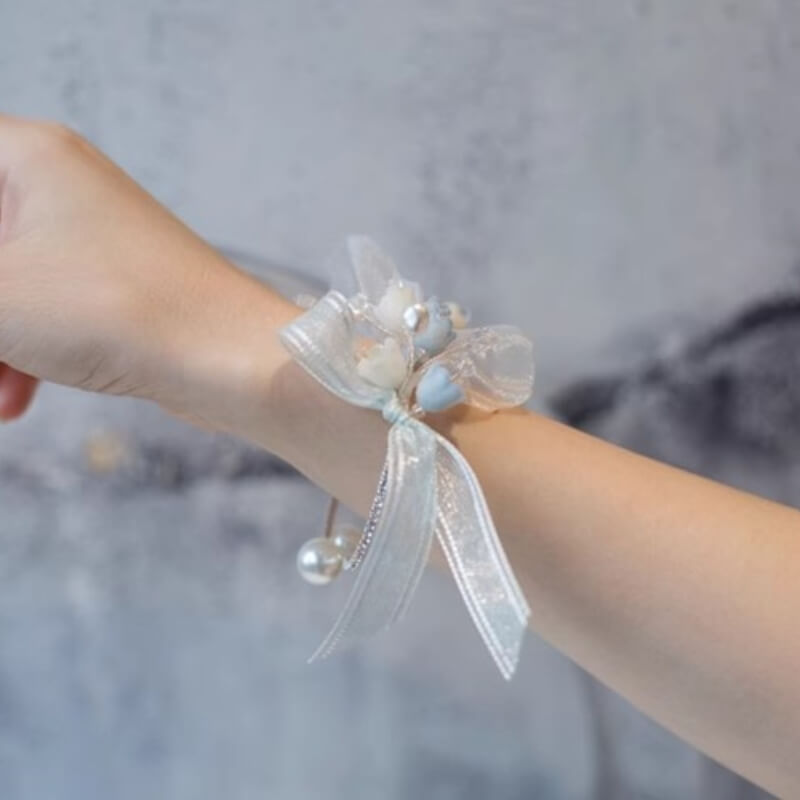
DIY Corsages: A Personal Touch
In recent years, the trend of creating DIY corsages has gained significant popularity, particularly in the context of weddings. This rise can be attributed to not only the desire for personalization but also the joy and satisfaction that come from crafting something unique and meaningful. DIY corsages allow brides, family members, or even the wedding party to infuse a piece of their creativity and personality into the event.
The Appeal of DIY: Making your corsage is about more than just customization; it’s about creating a connection. Each twist of the wire, each choice of flower, and each color selection is a personal decision, turning the corsage into a story in itself. For many, this process is a therapeutic and intimate prelude to the wedding, offering a moment of calm and creativity amidst the bustle of wedding preparations.
Choosing Materials: The first step in creating a DIY corsage is selecting the right materials. This includes not only the flowers and foliage but also the base of the corsage, be it a traditional wristband, a ribbon, or a more modern bracelet. The choice of flowers can be guided by the wedding theme, personal favorites, or even the language of flowers, where each bloom carries a specific meaning.
Construction Techniques: The construction of a DIY corsage requires some basic floristry skills, but these can be easily learned through various online tutorials and guides. The process involves selecting and preparing the flowers (trimming stems, removing excess leaves), arranging them aesthetically, and then securing them onto the base using floral tape, wire, and glue. Attention to detail is crucial, as is ensuring the corsage is robust enough to withstand the day.
Personalization and Themes: A DIY corsage can be personalized to an extraordinary degree. Beyond the choice of flowers, additional elements like miniature charms, family heirlooms, or even thematic items (such as seashells for a beach wedding) can be incorporated. This customization allows the corsage to truly reflect the wearer’s personality or the overall theme of the wedding.
Educational Resources: For those new to DIY corsages, a wealth of resources is available. From step-by-step video tutorials to workshops offered by local florists, there are numerous ways to learn the art of corsage creation. These resources not only teach the technical aspects but also offer tips on design and styling.
The Bonding Experience: Crafting DIY corsages can also be a bonding experience. Bridesmaids, family members, or friends coming together to create their corsages for the big day can turn the activity into a cherished pre-wedding ritual, fostering connections and creating memories.
Eco-Friendly Options: For the environmentally conscious, DIY corsages open the door to sustainable options. Using locally sourced flowers, upcycled materials, or even paper and fabric flowers can reduce the environmental impact while still creating beautiful, memorable pieces.
In summary, DIY corsages represent a shift towards personalization, creativity, and meaning in wedding accessories. They offer an opportunity to not only design a unique floral piece but also to imbue it with personal stories, memories, and values. In a world where weddings are becoming more about individual expression, DIY corsages stand as a testament to the beauty and significance of personal touch.
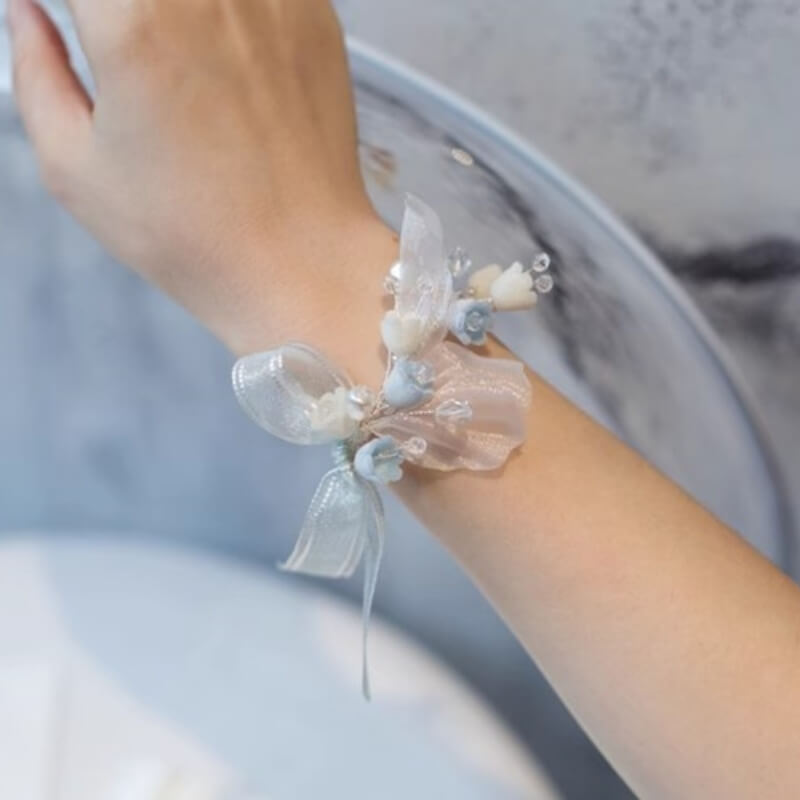
The Future of Corsages
As we look to the future, the corsage continues to evolve. Eco-friendly and sustainable practices are becoming more prevalent in corsage creation, reflecting a growing awareness of environmental issues. Additionally, alternative materials like fabric and paper are being explored for unique and lasting corsages.
Corsage Alternatives
For those looking for something different, there are numerous alternatives to the traditional corsage. Arm cuffs, floral bracelets, and even small handheld bouquets offer a fresh take on this classic accessory.
The Role of Corsages in Different Cultures
Around the world, the corsage holds various meanings and plays different roles in wedding traditions. Exploring these cultural differences offers a fascinating glimpse into how a simple floral arrangement can hold such diverse and profound significance.
The Significance of Color in Corsages
The color of a corsage can greatly impact its meaning and aesthetic. White symbolizes purity and innocence, red signifies love and passion, and pink represents grace and happiness. Choosing the right color is crucial in conveying the intended message and complementing the overall wedding palette.
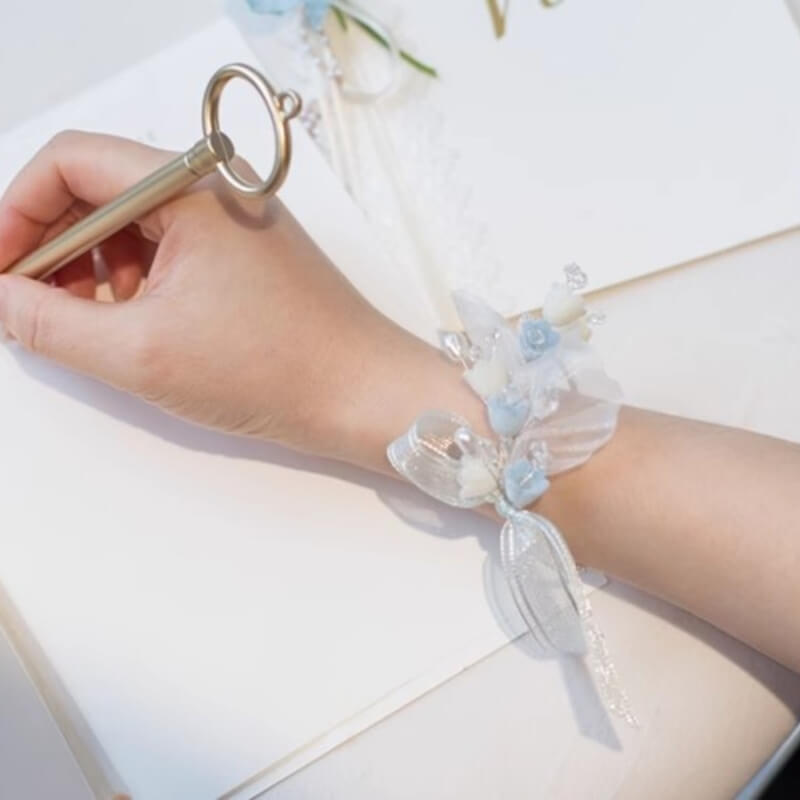
Tips for Preserving Your Corsage
Preserving a corsage allows it to become a keepsake, a tangible memory of a special day. Tips for preservation include air drying, pressing, and even professional preservation services, ensuring that the beauty of the corsage endures long after the event.
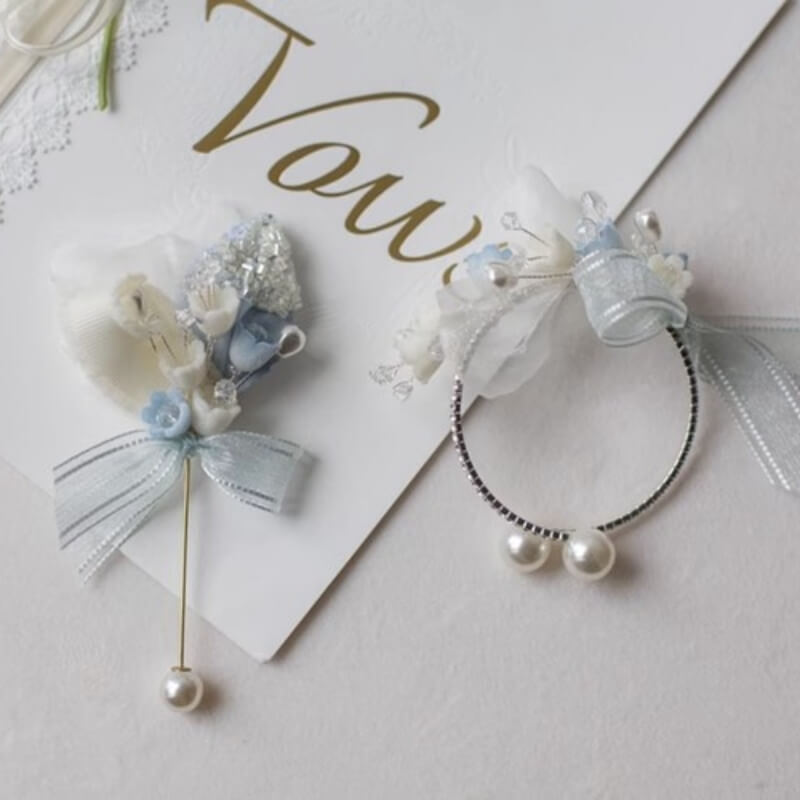
Conclusion
As we draw to the close of our exploration of corsages, it becomes evident that these delicate floral arrangements are far more than just accessories. They are a deeply rooted tradition, a symbol of love and respect, and a testament to the enduring beauty of nature’s gifts. In the context of weddings, corsages serve not only as a visual enhancement but as a meaningful gesture that honors the special individuals in our lives.
The journey of the corsage, from its ancient origins to its modern-day incarnations, reflects the evolution of societal norms, fashion trends, and cultural practices. Yet, despite these changes, the essence of the corsage remains unchanged – it is a symbol of celebration, a mark of distinction, and a piece of artistry.
In the hands of today’s brides, wedding planners, and floral designers, the corsage continues to evolve. The rise of DIY corsages speaks to a broader trend of personalization and sustainability in weddings. This hands-on approach allows individuals to express their creativity, imbue a part of themselves into the celebration, and foster a deeper connection with the event itself.
Moreover, the corsage stands as a reminder of the beauty of nature and the importance of preserving it. As we move towards more eco-friendly and sustainable practices, the corsage adapts, embracing new materials and methods that align with these values.
As we look towards the future, it is clear that the corsage will continue to be an integral part of weddings and formal events. Its ability to adapt to changing styles, its capacity for personalization, and its deep-seated symbolism ensure that it will remain a cherished tradition for years to come.
In conclusion, the corsage is more than just a floral accessory; it is a bridge between the past and the present, a canvas for personal expression, and a symbol of life’s most cherished moments. As we celebrate weddings and significant events, let us remember the humble corsage – a small but powerful emblem of beauty, tradition, and the enduring human spirit.
